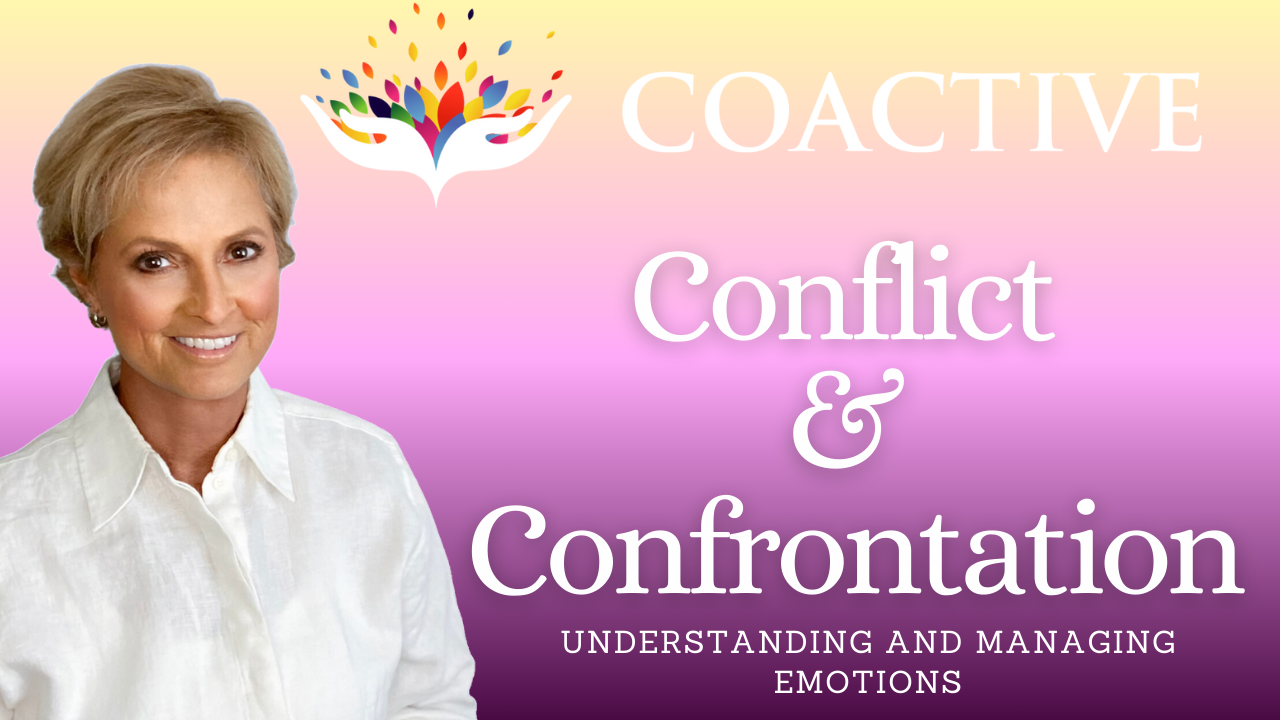Conflict & Confrontation - Understanding and Managing Emotions
Conflict and confrontation are related concepts, but they have distinct differences:
Conflict:
Definition: Conflict refers to a broader concept involving a clash of interests, opinions, values, or needs between two or more parties. It can encompass various disagreements and disputes in both personal and professional settings.
Nature: Conflict can be latent or manifest. Latent conflict exists beneath the surface, while manifest conflict is openly expressed. It can be both constructive and destructive, depending on how it is managed and resolved.
Causes: Conflict can arise from various sources, including differences in perspectives, goals, values, resources, or expectations. It may also be caused by misunderstandings or miscommunications.
Resolution: Conflict can be resolved through various means, such as negotiation, compromise, mediation, or collaboration. The goal of conflict resolution is to find a mutually acceptable solution to the underlying issues.
Confrontation:
Definition: Confrontation is a specific action or process of facing a problem, disagreement, or issue directly. It often involves addressing a conflict or challenging situation head-on, typically in a direct and assertive manner.
Nature: Confrontation is an action or behavior taken in response to a conflict or a perceived problem. It can be a part of the conflict resolution process, but it is not synonymous with conflict itself.
Causes: Confrontation is typically triggered by the presence of a conflict, disagreement, or perceived wrongdoing. It may arise when one party decides to address the conflict openly and assertively.
Resolution: Confrontation can be a step in the conflict resolution process. It may involve expressing concerns, grievances, or seeking clarification. The goal of confrontation is often to bring the issues to the surface and initiate a dialogue to work towards resolution.
In summary, conflict is the broader concept that encompasses disagreements and disputes, while confrontation is a specific action or process taken to address and deal with a conflict or disagreement. Confrontation is a way of acknowledging and openly engaging with a conflict to seek resolution or understanding, while conflict can encompass a range of underlying issues and disagreements. Confrontation can be a constructive part of conflict resolution when handled effectively, but it can also become confrontational or aggressive if not managed appropriately.
Distinctions between Conflict and Confrontation:
Conflict and confrontation are related but distinct concepts:
Conflict: Conflict is a broader concept encompassing a clash of interests, values, or needs between two or more parties. It can be either latent (beneath the surface) or manifest (openly expressed). Conflict can have various causes and can be both constructive and destructive. Conflict resolution aims to find mutually acceptable solutions to the underlying issues.
Confrontation: Confrontation is a specific action or behavior taken in response to a conflict or perceived problem. It typically involves addressing a conflict or challenging situation directly and assertively. Confrontation can be a step in the conflict resolution process, often aiming to bring issues to the surface and initiate a dialogue for resolution or understanding.
Thomas-Kilmann Conflict Mode Instrument (TKI):
The TKI Conflict Model is a widely used tool for understanding and addressing different conflict styles. It identifies five primary conflict-handling modes:
Competing: This style is assertive and uncooperative. It involves pursuing one's interests at the expense of others. People using this style are focused on winning and getting their way.
Collaborating: This style is both assertive and cooperative. It aims for a win-win solution by addressing the concerns and interests of all parties involved. Collaboration often involves problem-solving and open communication.
Compromising: This style is moderate in assertiveness and cooperation. It seeks a middle-ground solution where both parties make concessions to reach an agreement. Compromise is used when collaboration is not feasible or necessary.
Avoiding: This style is unassertive and uncooperative. It involves ignoring or sidestepping conflicts, often with the hope that they will resolve themselves over time. Avoidance may be used when the issue is not critical or when emotions run high.
Accommodating: This style is unassertive but highly cooperative. It prioritizes the needs and concerns of others over one's own. Accommodation may be used to maintain relationships and reduce tension.
Who is Right vs. What is Right:
"Who is right" focuses on assigning blame or determining which party's perspective or actions are correct. This approach can perpetuate conflicts by fueling defensiveness and escalating tensions.
"What is right" shifts the focus to the objective truth or the best course of action. It emphasizes finding common ground and seeking solutions that benefit all parties involved. This perspective is often more conducive to effective conflict resolution.
Role of Emotions in Conflict:
Emotions play a significant role in conflict:
Triggering Conflicts: Emotions, such as anger, frustration, or fear, can trigger conflicts when they are not effectively managed or expressed.
Communication: Emotions can influence how individuals communicate during conflicts. Strong emotions can lead to misinterpretations and hinder productive dialogue.
Resolution: Emotions can be barriers to resolution if they are not acknowledged and addressed. They can lead to entrenched positions and prevent parties from finding common ground.
Motivation: Emotions can also motivate individuals to engage in conflict resolution. Positive emotions, like empathy or a desire for cooperation, can drive the search for mutually beneficial solutions.
Understanding and managing emotions is essential in conflict resolution. Emotionally intelligent approaches can help de-escalate conflicts, improve communication, and lead to more effective problem-solving and collaboration.
Read More about Conflict and Confrontation

